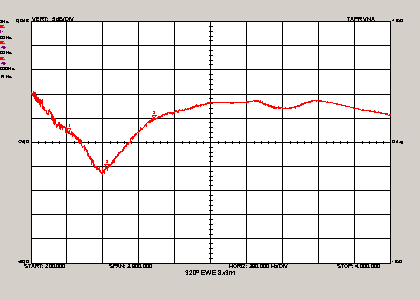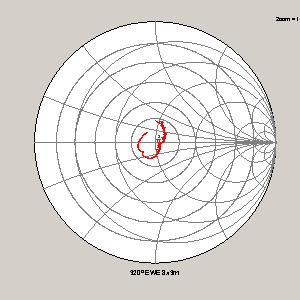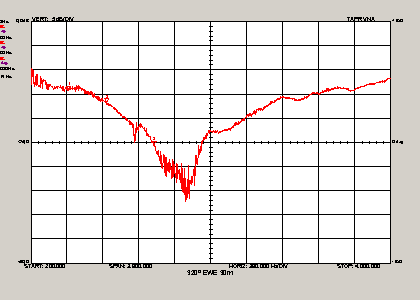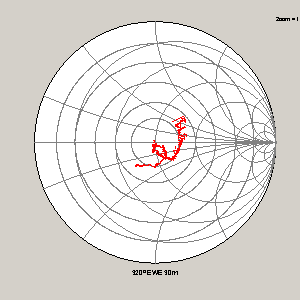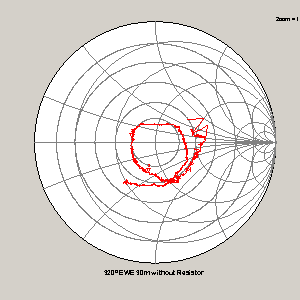on Ground (full resolution PDF)
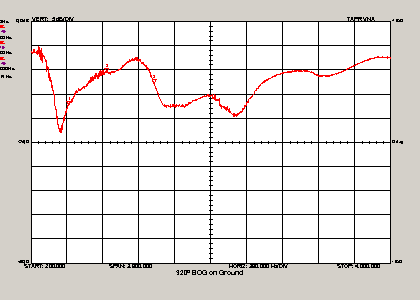

Initially I put the entire wire directly on ground to avoid strolling deer ripping it apart. But I then found that TA levels were not really great. So I raised the wire on 1m poles for 80% of the lenght and left the remaining 20% section on ground where animals would most likely stroll. That increased levels substantially and I used that setup from then on. For a test I lifted the entire lenght on 1m poles but the difference was not really big. The chart above shows that reflection is much greater than when lifted 1m above ground
20% on ground, 80% on 1m poles (full resolution PDF)

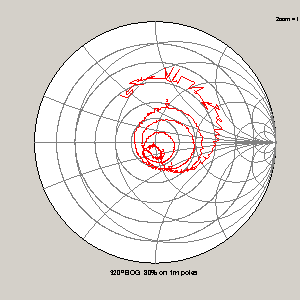
100% on 1m poles (full resolution PDF)
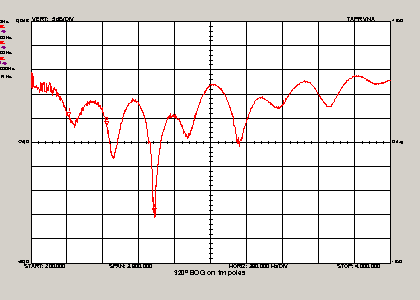

When entirely lifted 1m above ground the impedance match improves a lot, the 0,2-2Mhz range stays pretty close to 50 Ohms. Also the lower LW improves, but that did not help much, since LW signals were already very strong.
20% on ground 80% on 1m poles 0,2 - 30Mhz (full resolution PDF)
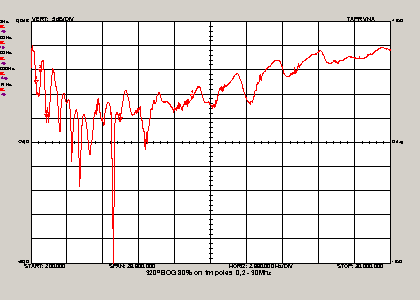
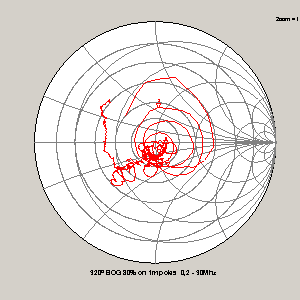
This was just done to see how it looks above 2 MHz, but reflection and mismatch increases. That was also proved reception wise. On higher SW frequencies the BOG performed less and less. My EWE outperformed the BOG easily in this range.
